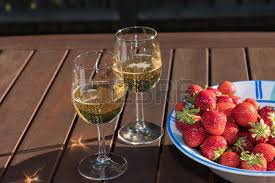Finding a perfect match of wine and food is important to create beautiful harmony in a meal. Of course, numerous books, articles, and websites provide comprehensive guidelines on how to pair food and wine, yet there are some simple basic rules that one can rely on and they are easy to learn and follow right away. Ready for me to share with you some basic great rules everybody needs to know to impress your guests? Here are some rules of Food and Wine Pairing 101.
To make our meals awesome with wine, we’ve got some rules to follow. Matching wine with food is like finding pals who share the same tastes, smells, and how strong they are. See, alcohol levels matter a lot! It’s like picking a sauce that fits perfectly with your dish. Selecting the right wine isn’t too hard, though. We just need to think about four basic flavors, which people have been mixing and matching for ages.
Tips for Pairing Food with Wine
For the right pairing, the combination taste is key. The main wine tastes would be sweet, sour, and bitter. For an illustration, let’s compare matching rules to the black tea + lemon + sugar taste combination. This is a blend of tastes of tart, sour and sweet. Some people may not like the lemon and others would not add sugar to their tea but the bottom line is that we can intuitively determine the tastes that supplement each other and figure what is delicious and what’s not.
What are the main food and wine pairing principles?
- Sour + sweet =YES,
- Bitter + sweet = YES.
- Sour+ bitter = NO, and
- Bitter + bitter = Hardly*
Of course, it’s easier to pair food with wine when you do know your wine and not just by its description. Wine taste notes, however, usually outline the main accents of wine taste.
A few more tips
- Bitter wines: dry white wines from the varieties Gewurztraminer, Torrontes, and Verdejo; dry white wines from the south of Italy and Spain.
- Wines with pronounced acidity: dry German rieslings, champagne, young sauvignon.
- Salty wines: dry sherries, some Greek white wines.
- Sweet: sauternes, ice wine, port wine, and sweet sherry.
Do not make things here more complex than they are. Wine has a taste, just like everything else has a taste. And these tastes can be combined to one’s liking. Ultimately, “good” wine” for a specific meal is something that should taste good to you!
Do not make Wine and Food compete with one another
- Does this dish go well with tart wine? – Imagine the dish with a cold strong black tea.
- Will it go well with acidic wine? – What happens if you add a drop of lemon juice to this dish?
- Will the dish pair with bitter wine? – What happens if I add an olive to it? Etc.
Remember, Wine and Food should not compete with one another in their tastes. Yet they should be complementing each other, like everything else on the plate. At the same time, the “heaviness” factor of wine and dishes is more important than the common principles of the “white – for fish and red – for meat” type.
“Heaviness” is like how much a dish or wine hits your taste buds. If you take a sip of wine and it feels like a flavor explosion in your mouth, that’s a bright wine. The weight of the dish should match the feeling you get from the wine.
Heaviness
It’s all about the intensity of taste and aroma – the benefits of one should not overpower the merits of the other.
What are the “heaviness” parameters that determine the intensity of wine taste?
- tannin (= tartness)
- strength
I pay attention to what the wine labels say and the wine descriptions during wine tastings. Wines with an alcohol content above 13.5% are usually considered stronger. (For whites it’d be 13%). Red wines are generally brighter than white, and red meat, as a rule, is brighter than fish – this is where the popular “white to white” rule comes from. Hence the exception: light red wine (not tart and not very heavy on alcohol) may complement fish quite well. And for some rare “fragrant” types fish (for example, flounder), this kind of red wines will suit better than white wine.
In general, it’s not so easy to find a wine match for flavorful dishes but you’d rely on your liking (taste) when choosing a matching wine. If the wine does not have a powerful aroma, then you can concentrate only on its taste. Otherwise – close your eyes and imagine that you want such a bouquet.
A quick way to match food with wine would be to look at typical wine-food combinations in the area where it comes from. Also, if you are not sure about your pairing, do not start sipping on your wine until you finish your food. This is as simple as it gets. If the pairing is less than perfect – as you drink the wine the alcohol will reveal all the downsides of this combination. Or take a sip between the mouthfuls of dish bites. If the pairing is close to perfect, however, ignore this rule.
A few more useful NOTs in food and wine pairing:
- NO nuts to wine (especially walnuts)
- NO vinegar to wine (this is about salads and marinades)
- NO canned food to wine
- NO coffee before the wine
In the end, you gain knowledge through experience. Remember, your experience, and not the experts’ or somebody else’s. No matter how many articles the critics have written about combining wine and food, they all are just recommendations that stem from personal experiments. The basics of this science are not set in stone, however. The food industry keeps changing and so does the winemaking industry. In the end, many pairing suggestions may not work anymore. In addition, some may be rather controversial and gain popularity for marketing reasons (for example, foie gras and Sauternes …) If you follow the rule – that’s fine. Otherwise, look for better pairings. In actuality, personal taste should be the major criterion in selecting the best food pairing for your wine.
Wine Gifting ideas
If you want to gift wine it should be a well-established wine known to most connoisseurs. And your wine gift should favor the taste of the person to whom it’s given.
Giving a Gift of Wine tasting
Each wine fan’s passion for wine goes through different stages: periods of love for powerful red are then replaced by fragile white, tangled stories with port and sherry, and inevitable moments of revelation with natural sweetness. Try to find out what “wine” stage the gift recipient is in – and get this person a present within this variety.
What wine to gift when you need to decide quickly?
If you want to gift wine, but the personal wine preferences of the gift recipient are hard to find out, then go with dry red wine.
If you are shopping in a wine boutique, do not hesitate to ask for a bit of advice from the consultants. It does make sense to seek recommendations from wine boutiques’ consultants and not the guards of the wine sections of department stores. Consider fine wine experiences with our international one-of-the-kind Wine Club. I am in Alaska but my wine gets delivered from California vineyards right to my door! Learn more about this Wine club, fine wine, and join us on our Wine and Dine Wednesday nights!
If you are also seeking a restaurant-quality meal or a takeout to accompany your wine at a better price you have come to the right place. Our new program offers much more than just restaurant food, you also get access to a variety of services and benefits including insurance and legal services. Entrepreneurs and business owners: see how you can put money in your pocket with this program!





